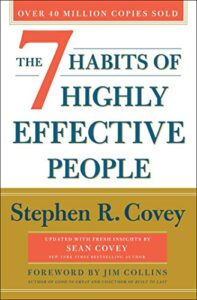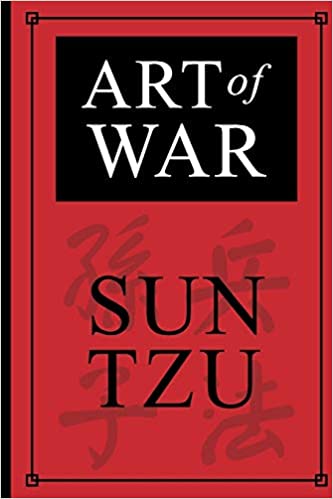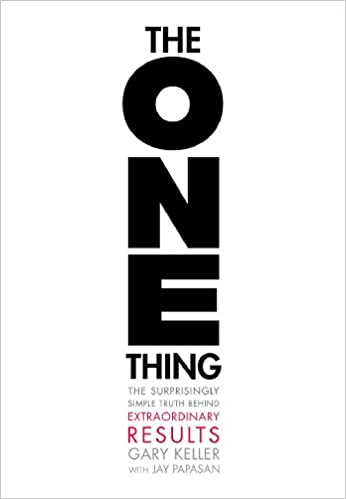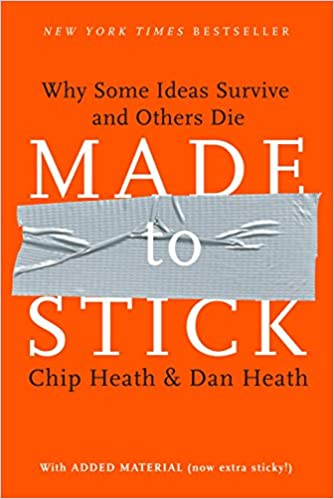
Book: The 7 Habits of Highly Effective People
Authors: Stephen R. Covey
Year Published: 1989
Buy on Amazon
BOOK SUMMARY
TOPLINE
The 7 Habits of Highly Effective People is perhaps the biggest self-help bestseller of the last thirty years. The book has sold over 25 million copies.
In one sentence, this book is about how to change yourself such that you become highly effective and successful in every aspect of your life.
These 7 habits will help to get a balance in your life both personally and professionally. As a pre-requisite for the 7 habits to work, there needs to be a paradigm change. The process of the paradigm, change begins with focusing on your attitudes and behaviors.
Covey says that the primary problem is the way that we see the problem. To accomplish the paradigm change that you want, you will need to change the way you look at the world.
Life’s most important skill is communication skills. Building on this skill will help you build better relationships. At the same time, investing in continuous Learning will help you continuously improve yourself. Communication and Learning are the two fulcrums that will help you grow personally.
This book presents an approach to enhancing your professional effectiveness. This approach is centered on character and principles.
The 7 habits break down as follows:
Habits 1, 2, and 3 deal with you, the person within. These habits propel you forward from being dependent on the world to be independent of it and making it your world. These are the habits of self-mastery.
Habits 4, 5, and 6 are about interpersonal relationships. These habits are about working with other people. Through learning active cooperation, these habits will propel you to a stage of interdependence. This Habit helps you to a scene where you can accomplish more through leveraging relationships with other people than you would be able to do on your own. These are the habits of working with others.
Habit 7 is about developing a strategy of personal growth and self-improvement. Learning this Habit leads to continuous improvement.
BOOK SUMMARY
Habit 1: Be Proactive
You create your own reality. You are the one that is in charge of your life.
You need to take responsibility for your actions. If you are successful, it is due to your efforts. If you are struggling, that is also due to you. You need to take responsibility for your reaction to experiences.
And it is you that needs to respond positively to improve outcomes.
You need to recognize what is inside your Circle of Influence and what is inside your Circle of Concern.
You should focus your responses to expand the circle of your influence and continuously. Covey advises that you should not operate in a reactive mode, waiting for problems from your Circle of Concern, to become large before taking action.
Covey quotes Viktor Frankl, author of Man’s Search for Meaning, to say: “Between stimulus and response, there is a space. In that space lies our freedom and our power to choose our response. In our response lies our growth and our happiness.” (It must be noted that researches have argued that this quote is misattributed to Viktor Frankl and that its author is perhaps unknown. That anonymity of the source does not detract from the powerful and relevant message that this quote delivers)
Covey introduces readers to the concept of “Circle of Control.” This circle focuses on all that we care about. He makes the point that given that we might be able to influence only a part of what we care about at any time, that should be our entire focus.
The “circle of concerns” includes everything other than what we have put into the “circle of control.” Focusing on anything outside what we can influence will bring us into the circle of concerns and result in wasted time and wasted energy.
As you focus more and more on the things that you can control, the more your abilities and skills will improve. This will, in turn, will further help to expand your circle of influence.
How do you begin to shift your focus on to the circle of influence? The author suggests that to accomplish this, you need to stop using sentences that start with “if.” For example: “if only I had…” and instead begin to use “be” sentences. For example: “I can be better…”
Habit 2: Begin With The End In Mind
In the oft-quoted conversation from Lewis Carroll’s Alice’s Adventures in Wonderland, that takes place between Alice and the Cheshire Cat. In response to Alice’s question about which way she out to go, the Chesire Cat replies, “If you don’t know where you’re going, any road will take you there”!
It is precisely this lack of clarity about one’s desire for the future that Covey addresses in this 2nd Habit.
What Covey means by Begin with the end in mind is quite simply that you need to be clear about who you want to be and where it is that you want to go?
Only with clarity on these two points should you begin your journey.
Covey states that there are two kinds of conceptual creation. The first is Mental creation, and the Second is Physical creation. These two kinds of conceptual creations are sequential. Mental creation has to come before Physical creation.
Consequently, if you do not have clarity about the mental creation aspect of where you would like to see yourself, then you are pretty much at the mercy of happenstance and randomness.
Personal End in Mind: Principles
Covey suggests that you need clarity on where you want to be. You equally need clarity about who you really want to be.
Once you have this clarity, you can then draft principles and values that are in sync with the persona that you have now clearly built in your mind.
Once you have clear values and principles for this persona, you will begin to approach key decision points in your journey with a high degree of confidence.
Covey recommends that you should write a personal mission statement. The purpose of this mission statement would be to make clear to yourself the alignment of your life’s goals and the personal principles that you have identified for the person that you would like to be.
Habit 3: Put First Things First
Once you have the Habits 1 and 2 sorted out and have clarity about your life goals and principles, then the next Habit that you need to inculcate is the Habit of prioritization.
Very simply – put the priorities that matter most to your life first.
Your logic of prioritization comes through the lens of your life’s goals. Your goals and principles will show you what task you need to prioritize and which you can afford not to prioritize.
The Time Matrix

As a method of visually analyzing this Habit, Covey introduces us to his’ time quadrant’, using Eisenhower’s Time Management Matrix.
He clarifies that managing time is in of itself, not the principal challenge. The real problem is knowing where and what to focus on at a specific point of time.
He further clarifies that you should focus your time on things that are non-urgent but which are essential.
By doing this, you will protect yourself from having to deal with Important tasks that have, over time, become urgent. When this happens, i.e., you have to deal with important and urgent tasks, your stress increases, and the quality of your results decreases.
How do we define what is urgent?
Any subject that needs our immediate focus is Urgent. Urgent matters capture attention and energy. More importantly, they exert pressure on you. It’s easy to miss the difference between the urgent and the important.
How do we define what is important?
Any act that contributes to your medium and long term life goals, or the purpose of your life is what is important. Some examples of important activities are Relationship building, Finding new opportunities, Personal growth, strategizing, and planning.
Once you identify the ‘important’ activities, it is prudent to address them when they are still in a stage of being not-urgent. Ignoring these activities can cause them to inevitably become urgent at some point of time and create a crisis for you.
Deal with these important activities proactively while they are not-urgent instead of dealing with them reactively when they are urgent, and you have a crisis on your hands.
By default, we tend to focus way too much on activities in quadrant 1 (The urgent and Important tasks). This focus is counterproductive as this means that we will always be in a fire-fighting mode, and never get to build towards the life goals that we have identified.
Quadrants 3 and 4 are the activities that do not matter much regardless of whether or not they are urgent.
Some examples of quadrant-3 activities are Emails, phone calls, meetings, etc.
Some examples of quadrant-4 activities are Trivia, interruptions, short term pleasure activities, etc.
According to Covey, productive people focus their time in Quadrant 2. This focus helps them to manage their activities proactively, and thereby minimize the amount of time that they need to spend, in crisis mode, in Quadrant I.
Quadrant-2 has the things that allow you to work towards the life goals you have identified. By acting proactively, and by seizing opportunities, rather than by continually solving crises.
Effective people largely ignore Quadrants 3 and 4.
Habit 4: Think Win/Win
A win-win mindset sees life as an opportunity for cooperation. Not as an arena of competition, where the winner keeps all.
Win/win is also a framework of thinking that looks for mutual benefit in human interactions. A win/win framework means that a negotiation or an agreement has produced a mutually profitable result.
Delivering a win-win outcome requires a balance of confidence, courage, empathy, and open-mindedness to consider the position of the other person.
This maturity is fundamental to the creation of win-win outcomes.
The 6 paradigms of human interaction:
Covey states that to manage our relationships with others effectively, we should understand the 6 paradigms of human interaction.
These paradigms of human interaction are:
- Win
- Win/Lose
- Lose/Win
- Lose/Lose
- Win/Win or No Deal
- Win/Win
In the first paradigm of ‘Win,’ the people operating in this paradigm need to win at any cost.
The Win/Lose and Lose/Win paradigms are the opposite sides of the same coin. When A wins, B loses. Covey makes the point that we are automatically conditioned for these two responses. Sports and competitive education ingrain this mindset into us.
These paradigms can be dysfunctional.
Lose/Lose is a dysfunctional philosophy of 2 people who generally operate in a Win/Lose paradigm. Their interaction of having to Win at any cost results in both people losing in the transaction. Hence Lose/Lose.
Win/Win is the paradigm of effective leaders. The goal in a Win/Win transaction is cooperation. The goal of the transaction is for everyone to succeed. This paradigm ensures that both participants in the transaction come to a mutually beneficial outcome. In this paradigm, both parties win, although the final deal reached is at some divergence from the original goals of the parties.
What differentiates the people operating in the Win/Win paradigm from others is character, integrity, and maturity. The people with the Win/Win mindset also benefit from an “abundance mentality”—the idea that there is enough available in any situation for all parties to benefit from a successful outcome.
Win/Win or No Deal is a variant of the Win/Win paradigm. It can be thought of as a “higher expression” of the Win/Win paradigm.
In the Win/Win or No Deal paradigm, both parties agree in advance of negotiations that they would both walk away from the deal if they both cannot come to a decision that benefits both parties.
This paradigm sees the development of trust, transparency, and openness between the parties. Courage and Consideration are the foundations of the Win/Win paradigm.
Habit 5: Seek First To Understand, Then To Be Understood
Covey states that communication is simply an essential life skill. However, he believes that most people do not understand how to communicate well. They particularly do not listen well.
Listening is, of course, the first and fundamental skill in Covey’s Habit number 5.
Good listeners listen actively, they are empathetic, and They listen to understand. They are not waiting for the other person to stop speaking so that they can begin to speak.
Listening is the foundation skill of influencing people by understanding them first.
According to Covey, there are four levels of listening:
– Ignoring
– Pretending to listen
– Attentive listening
– Empathic listening
Most people do not make it beyond the 3rd level of listening, i.e., the Attentive level of listening.
At the empathetic level of listening, the listener removes his or her frame of reference as much as possible. An empathetic listener focuses on body language, the tone of voice, and non-verbal cues in a way that approximates putting oneself into the shoes of the other person.
The empathetic listener verbalizes the point of view of the other person out loud. This verbalization ensures that the listener understands what is said, without error. Hearing their own view restated by another person can further help bring about clarity between two parties.
This mutual understanding can move people to solutions.
To “Be understood” is the second skill in Habit 5.
Covey uses the Greek philosophical concepts of ethos, pathos, and logos to explain the steps of effective communication, that are fundamental to Habit 5.
Being understood is all about one’s presentation of ethos, pathos, and logos, in that order.
Ethos: This involves the establishment of trust. These are elements of your character that contribute to your credibility, your integrity, and, last but not least, your competence.
Pathos: This is the stage where the ability to listen with empathy comes in. To listen with empathy is to understand the other person’s emotions about the subject objectively.
Logos: This is the stage where you can explain your point of view with logic. It is the demonstration that you have considered all known facts in arriving at your position.
This sequence allows us to manage communication with positive influence and with impact. This sequence allows us to communicate or ideas clearly and visually. Finally, it will enable us to communicate, demonstrating that we have understood the other person’s position and concerns.
Covey makes the case that to be able to make an effective presentation, the parties involved must be able to trust each other. Therefore, integrity and openness are vital for understanding and to be understood. The part that requires courage is being able to show vulnerability.
Habit 6: Synergize
“A Team is Stronger Than an Individual.” Or said differently, “the whole is greater than the sum of its parts.”
Synergy is that creative cooperation between two or more parties that have different strengths and abilities and who work together to arrive at a mutually beneficial agreement.
The presence of trust and a willingness to cooperate is necessary for synergy to occur.
Covey argues that the essence of principle-centered leadership is that in which creative cooperation takes place between people. This effective group synergy works based on valuing the difference between people, as a strength.
Synergistic relationships succeed by all parties working together by building on different ideas and viewpoints.
Synergy will not occur when people operate in a Win/Lose or a Lose/Win kind of self-centered mindset. When trust is low as in these kinds of interactions, then cooperation will be understandably small.
A compromise solution, while sometimes workable, is by itself not a synergistic solution. The defining element of a Win/Win outcome is a high level of trust and cooperation.
For parties who commenced a relationship with two or more conflicting goals between them, synergy occurs when they can arrive at a mutually beneficial alternative solution. Additionally, this third solution is principally superior to any of the options that the parties had initially proposed. This transformation is synergy.
A synergistic relationship helps in communication by helping break down interpersonal barriers. By keeping communication open, honest, and respectful, synergy can come about. It can convert restraining forces into driving forces.
In a synergistic environment, the group functions as one to achieve its best performance.
Habit 7: Sharpen the Saw
The final Habit contained in this book is “Sharpen the Saw.” This Habit is about preserving, cultivating, and growing the most significant asset that we have, which is ourselves.
Drilling down, “sharpening the saw” is about investing in and renewing the four vital dimensions of our lives. These are the physical, mental, social/emotional, and spiritual.
Investing in ourselves is perhaps the highest or most potent investment that we can make in our lives. What is more, this is an investment that we alone can do for ourselves.
Renewal in each of these four areas helps to create growth and change in your life. This sharpening of the saw re-invigorates you so that you can continue to build on the first 6 habits.
The Physical dimension: This dimension details the need and benefits of caring effectively for our physical body.
– The Right nutrition,
– Adequate Relaxation and
– Regular exercising: Endurance + flexibility + strength
As we build on the aspects of this dimension, our view of ourselves, our self-confidence and self-esteem, all improve simultaneously.
The Spiritual dimension: This dimension is at the very core of our being. It reflects our value system. The spiritual dimension also determines our sense of our purpose in life.
Failure to sharpen this saw can leave you with a sense of a void of being cynical, and over time just burned out.
The spiritual dimension is the easiest to neglect because the spiritual dimension is amorphous, while concrete day to day struggle is more immediate.
Cultivating the spiritual dimension can be done through some of these options:
– Study of scriptures and philosophy
– Spending time in silence and solitude
– Cultivation of gratitude
The Mental dimension: For most people spending the day at work and always thinking about their work dulls their mental faculties.
Their desire in their downtime is to switch off.
Instead, what Covey recommends is a change in routine for what they do in their downtime. This change will help them sharpen their saw!
The mental dimension is addressed through reading good books – these could be business books or literature. It could be writing a journal, as opposed to watching TV mindlessly.
Cultivating the mental dimension could be done through one of the following techniques:
– Join an online school for a course that you always wanted to do
– Join a local evening college similarly to learn a new subject
– Listen to a few quality podcasts
– Join a discussion group or a mastermind group in your city on a topic of interest to you
The Social/Emotional dimension: The social dimension is related to our sense of needing interpersonal contact. The social dimension is an aspect of personal security that we are all hardwired for psychologically.
This sense of personal security isn’t related to other people’s value of our worth. This sense is intrinsic; it is our sense of self-worth.
This sense comes from the correct principles and integrity in our minds and heart. The social/emotional dimension reflects our most profound personal values.
Cultivating the Social/Emotional dimension could be done through one of the following techniques:
– Help other people in a meaningful way
– Volunteer with a charitable organization
– Spend more constructive time with your family
– Rebuild friendships that you have lost along the way
– Join a team – make new friends
RECOMMENDATION
I would recommend this book very highly.
This book is, without a doubt, a classic of personal development. It helps remind us of some of the foundation principles of success. Some of the habits that the book speaks about have become a part of our daily conversational idiom. Concepts like ‘Start with the end in mind’ or ‘Sharpen the saw’ are all terms that most of us use regularly.
Honest conversations can be a starting point for developing a better understanding of interpersonal relationships. Sharing emotions can help enhance empathy and deliver a better understanding of each other’s goals.
Covey defines personal effectiveness as the balance between results and empathy for what helped produce the results.
Covey speaks with great conviction about “correct principles.” Following these “true north” principles is the route to building a better understanding of people that you work with or interact with. This approach is the path of constant improvement of outcomes, through the cultivation of better habits.
In Covey’s words, “Leadership is communicating others’ worth and potential so clearly that they are inspired to see it in themselves.”
This book is a must-read for anyone who aspires to be an effective business leader, an effective teacher, or even an effective parent.
Links To The Authors Of The Book:




